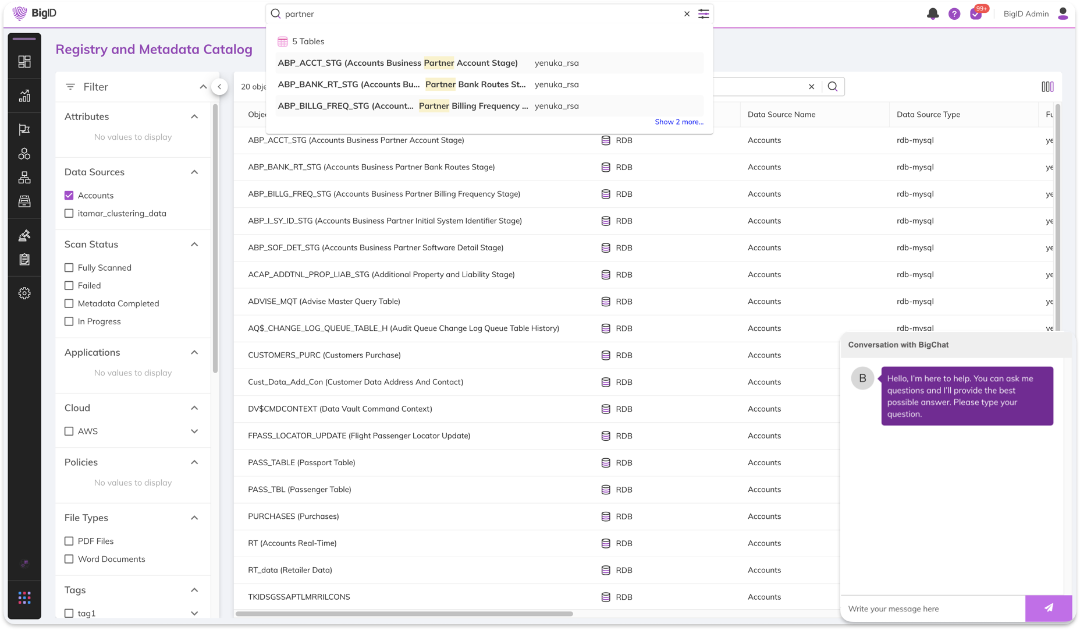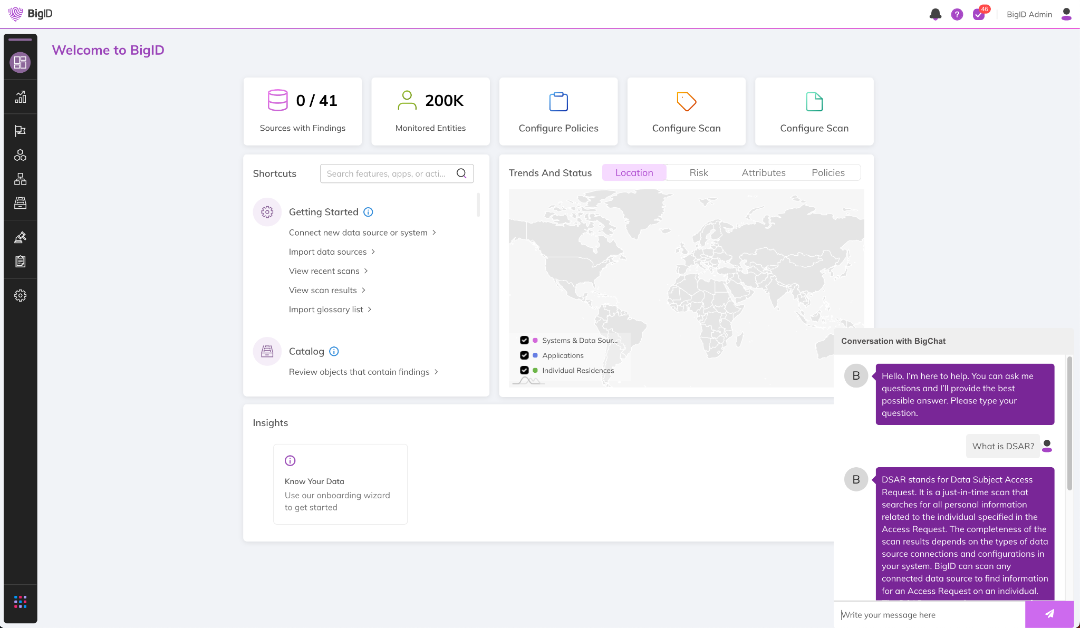
In today’s rapidly evolving tech landscape, AI has emerged as the hottest topic of 2023. Generative AI, like ChatGPT, have captivated the world, empowering individuals and organizations with their unprecedented use cases that seem to grow exponentially by the minute.
AI is a fundamental element of BigID’s DNA. Using AI in the right way can accelerate security operations, streamline privacy compliance, and provide you with accurate and invaluable insights into your data environment.
As a result, BigID has introduced its adaptive AI, the newest adaptive AI helping users close the gap between data insight and action.

Data Easier to Understand
BigAI helps greatly improve the quality of data environments. BigAI can automatically give “friendlier” names to your data tables and columns to improve data accuracy and interpretation. Many tables at times use given or default names that are composed of complex acronyms or abbreviations, which makes it hard to understand the table’s true meaning and purpose. The concept of using friendlier names to find and interpret data is based on the idea that using descriptive and standardized names for data elements improves your data understanding and analysis. When data tables and columns are given meaningful and consistent names, it becomes easier for users to search, interpret, and make sense of the data.
By indexing these friendly names, users can gather similar results that may have originally been labeled with alternative abbreviations or variations. For example, if data elements were labeled as “CUST ACCT” or “CUSTOM ACCNT,” indexing them with a friendly name like “Customer Account” allows a user to gather all related data under one standardized name, even if the original labels were different. This helps in data aggregation, analysis, and reporting, as users can confidently search for and compare data using consistent and meaningful names.
This concept is also a form of data clustering, where data elements with similar meanings are grouped together under a standardized name. Just like how clustering algorithms group data points based on their similarities, using friendly names for data elements helps to cluster and standardize data based on their true semantic meaning or context.
Document Clustering
Document clustering groups documents with similar topics or content together, promoting better data governance and management practices. This helps improve data quality and decision-making by making it easier to access relevant information quickly. BigAI takes it one step further by automatically giving each cluster a friendly name and even a short description summarizing the documents inside.
Cluster titles are automatically generated based on the documents contained within each cluster, allowing for easy indexing and searching through metadata. This meta-clustering technique adds more semantics to your search, making it easier to find exactly what is needed. You can even search for clusters by the friendly titles BigAI generates, adding a layer of organization to your data management practices.

Faster Way to Get Answers
In addition to BigAI, say hello to a virtual, personal assistant – BigChat! BigChat is like having a knowledgeable, resourceful, and tireless teammate by ones side, helping make sense of data challenges and unlocking new possibilities.
BigChat brings unparalleled efficiency when navigating through your data insights and actions. How do you identify and classify sensitive data? Want to learn how to automate DSARs for privacy compliance? BigChat will teach you how we streamline that process. Want to understand the classification types that exist in BigID? BigChat will give you the full rundown! The possibilities are endless – BigChat is ready to revolutionize your data journey like never before.
How does BigChat do this? By leveraging the quality and richness of existing BigID documentation, including PDFs, guides, forum posts, and articles – feeding all of this information into BigAI to produce the right answers at lightning speed. While the BigID Docs site originally was designed to be a centralized watering hole for such information, BigID continued to produce other resources that you could tap into. This included the BigID University, BigID’s Engineering Blog, BigID.com Blog, and the BigID UI itself, in addition to HTML, MD, and JSON data and files. BigAI comes in and does its magic by parsing across multiple troves of information sources and generating an accurate, informative response.






